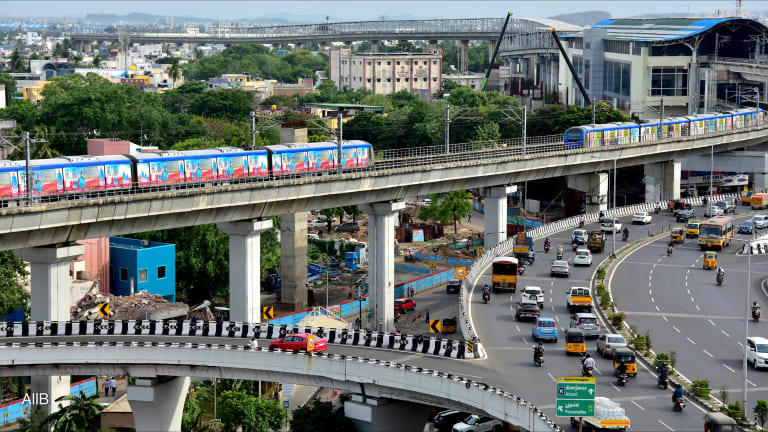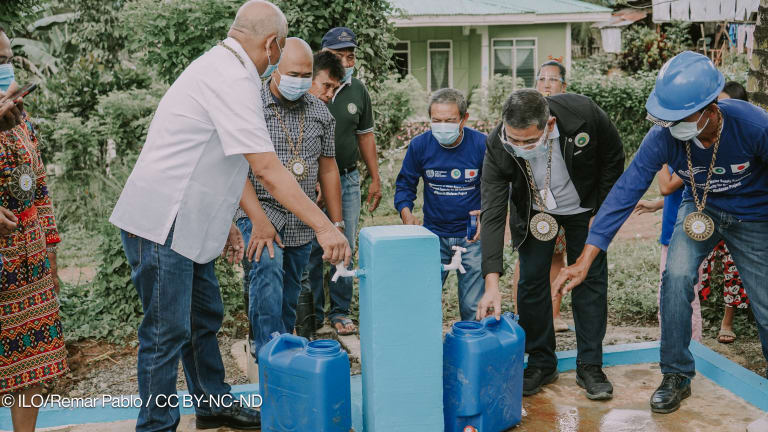
If any economist had said on Dec. 19, 1966, when the Asian Development Bank was founded, that in just 45 years China would become the world's second-largest economy and India the fourth in terms of purchasing power parity, he — and no doubt it would have been a man — would have been scoffed at, dismissed or perhaps even considered a bit insane.
But time would have proven him right.
Indeed, the growth of Asian economies has been astounding in the wake of World War II, the conflicts in Korea and Vietnam, and the end of colonial rule across the region. By some estimates, China will be the largest and India the third-largest economy in the world by 2025, and Asia-Pacific will account for half of global GDP by 2050.
So, should the region's leading international financial institution focused on development take a self-congratulatory bow and leave the stage? ADB was precisely founded for the purpose of “fostering economic growth and cooperation in the region of Asia and the Far East.”
With strong U.S. and Japanese support amid growing Cold War tensions, in the 1960s and 1970s the bank helped deliver financial resources and international expertise to speed development in a region that had no Marshall Plan.
Nearly five decades on, parts of Asia are awash in capital and foreign direct investment, and numerous showcase infrastructure projects in the region are the envy of the world.
Yet, these impressive top line statistics have failed to eradicate many pockets of tremendous poverty.
Lead the way for change
Asia’s journey toward more sustainable economic development, equal opportunity and the most efficient utilization of financial and human capital is far from over despite billions of dollars in development loans and official development assistance.
As ADB prepares to convene for its annual meeting in Astana, Kazakhstan, it needs to re-evaluate its strategies to address the reality beyond the glowing headlines of a region on the rise.
Take India as an example. A recent report by McKinsey & Co. estimates that 680 million Indians today lack the means to meet their essential needs: 57 million are excluded from economic opportunity, 210 million are impoverished and 413 million are vulnerable. On average, India's citizens lack access to 46 percent of the basic services they need and just 50 percent of government spending actually reaches the people for whom it is intended. Such "leakages" and corruption must be addressed. McKinsey also estimates that critical government reforms could help 500 million Indians cross the "economically empowered consumption threshold" by 2022.
What role can the ADB play in this? How best to strengthen the ability of India and other developing nations in Asia to address such stark realities? We suggest some future next steps so the bank can lead the way and perhaps set the pace for change at its sister organization, the World Bank, as well.
First, ADB should address outdated internal incentive and management systems that undermine development effectiveness. More emphasis must be placed on the quality, rather than the quantity, of lending and other assistance provided in the name of development. Too often the measure of success by management and staff remains board approval of and size of a loan — the bigger and faster, the better — and not the consequences and outcomes that follow.
An example of this is the so-called multi-tranche development loans. These, in theory and following initial board approval, allow subsequent tranches of funds to be denied if original objectives are not met. Politics and management pressures can, however, contribute to a rubber stamp go-ahead of second and third tranches even when experience with the first tranche would suggest otherwise. This approach needs to be modified.
Second, ADB must recommit to helping the smallest and least-developed nations in Asia. The limited ability of small nations — whether Afghanistan or tiny Nauru — to make effective use of development assistance, be it grants or loans, works against them in a system where attention is unwaveringly focused on the biggest borrowers: India, Indonesia, the Philippines, Vietnam, and even China, which continues to borrow despite the size of its economy.
Third, and in a break from its erstwhile pattern, ADB should place immediate and forceful emphasis on skills training and education. The demographics of many parts of Asia are heavily tilted toward the young, who will increasingly fail to gain employment without the skills required in a knowledge economy.
Look into the future
Every day, new developments in technology displace workers. With such “progress,” manufacturing will no longer provide the large numbers of jobs sought after by one-time agricultural workers hoping to take advantage of the region’s overall growth. It is thus imperative that ADB re-evaluates static approaches based on old models of growth, and also its own abilities to deliver the best people, best experiences and best ideas to developing Asia.
Creating and sustaining a fertile ecosystem of prosperity will require more than spending money, no matter how efficiently and transparently such funds are used. It’s a well known fact that employment is generated by small- and medium-sized enterprises and by creating an environment in which entrepreneurship can flourish. That, in turn, rests on an ecosystem where innovation flourishes. How can development banks help in this regard? This is a question all of the region’s development partners need to ask themselves.
Over the past year, ADB went through yet another internal exercise, seeking to reassess its long-term “2020 Strategy” and its relevance. To its credit, the process underscored the need for change, particularly as the region the bank seeks to serve has changed so rapidly.
As Asia’s economic growth continues to drive the global economy, it’s time to bid farewell to systems that help ensure development money flows without regard to results, impact and outcome.
Scoff at us, dismiss us or even call us a little insane — but we believe there is room in development for strong, viable and relevant institutions that place precedence on loan quality over quantity, ensure access to quality education and skills, and prize innovation and entrepreneurship as a means to job creation.
Join the Devex community and access more in-depth analysis, breaking news and business advice — and a host of other services — on international development, humanitarian aid and global health.
See more:
Is the time ripe for China's own aid agency?
Where does ADB spend its money?
ADB's plans to make itself more relevant, responsive and effective
ADB: Cofinancing, partnerships to bridge Asia-Pacific’s development gap









